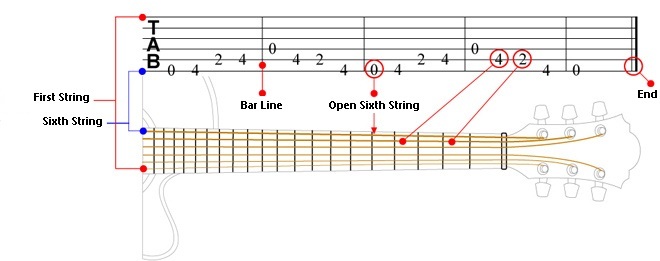Introduction to Tablature
Learning to Read Guitar Tablature
Guitar tablature (also known as TAB) is an ancient system of notation that uses lines, numbers, and symbols. Although TAB has limitations as a form of musical notation, it can be a helpful tool in learning to play music and exercises on the guitar.
Tablature Basics
A tablature staff is made up of six horizontal lines. These lines represent the six strings of the guitar.

The top line represents the first (or thinnest) string.
The bottom line represents the sixth (or thickest) string.
Numbers placed on the lines indicate the frets to be fingered by the left hand.
A zero represents an open string.
The vertical lines are called bar lines. These lines divide the tablature staff into equal parts called measures.
A double bar line marks the end of a piece of music.
Other fretted string instruments (such as lutes, mandolins, and banjos) may also use tablature.
Reading Guitar Tablature
When reading guitar tablature, start at the left and read to the right (the same as if you were reading a book). See the following video of "Low String Boogie" for an example.
Writing Guitar Tablature
When you write guitar tablature, keep the following points in mind:
Write legibly; for example, it is easy for a 6 to look like a 0!
Group notes logically.


When you notate chords, make sure that all the fret numbers of the chord are aligned vertically.
![]() You may print a copy of blank tablature paper to notate music using your new skill.
You may print a copy of blank tablature paper to notate music using your new skill.
Write out "Spanish Song" using guitar tablature. Remember to include the accompaniment notes on the open second and third strings. Write the notation for the Em chord on the last beat of the song. Check your work here.





